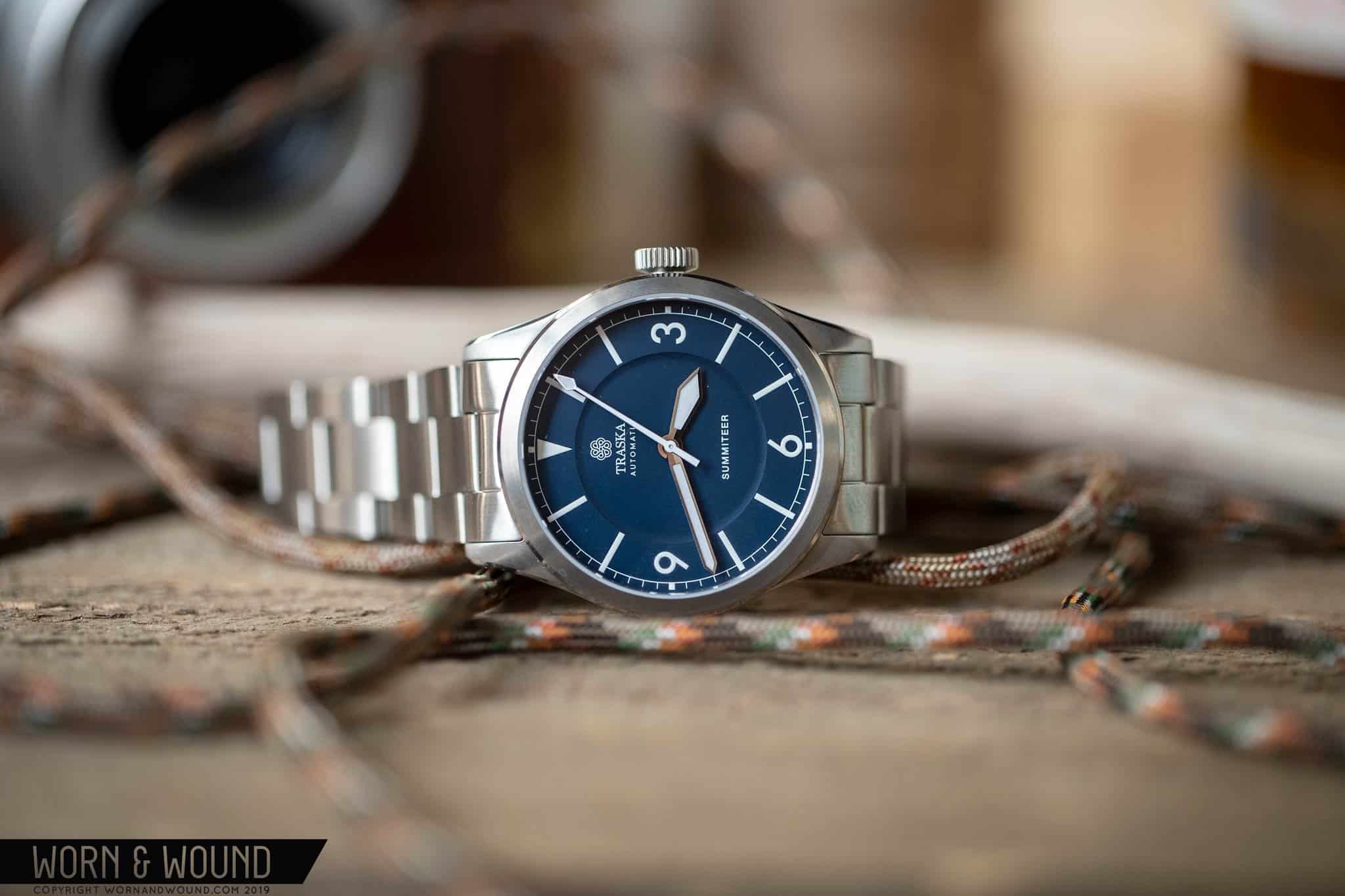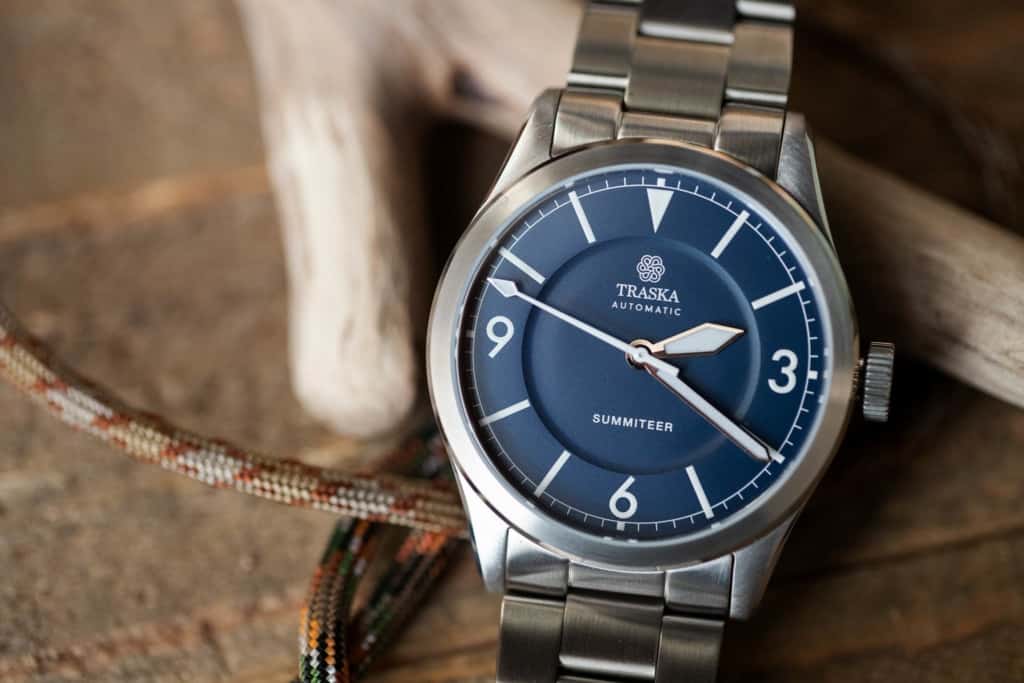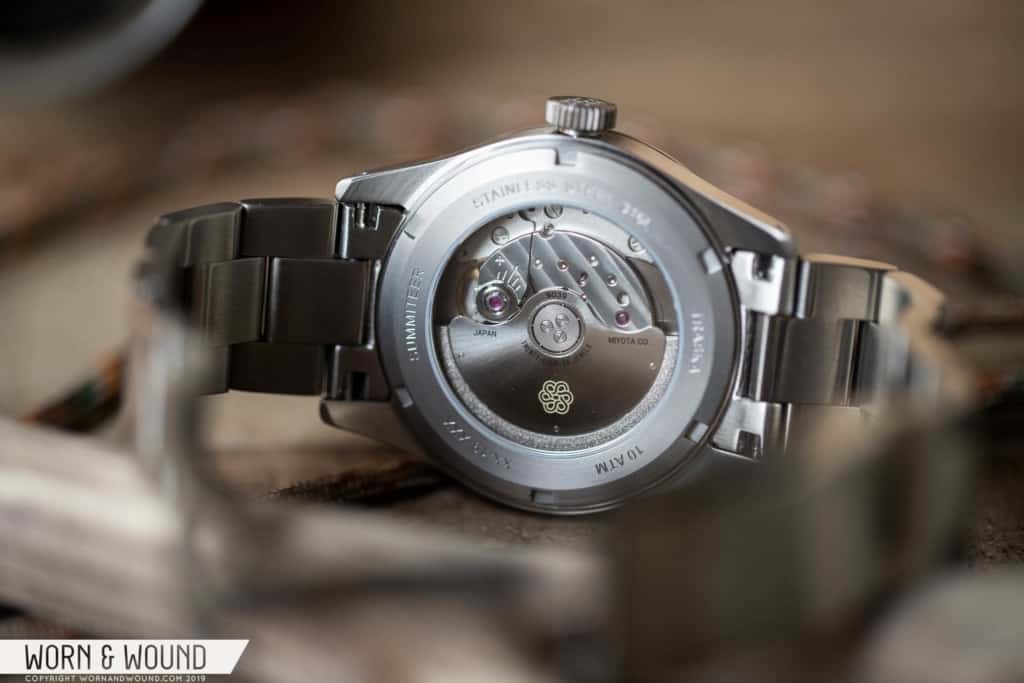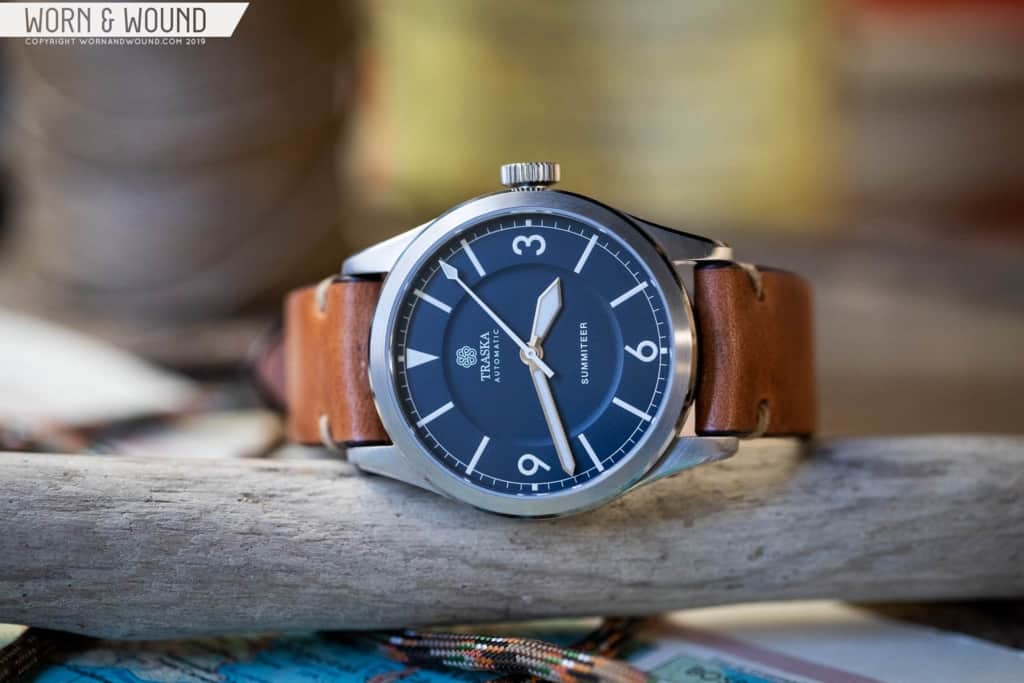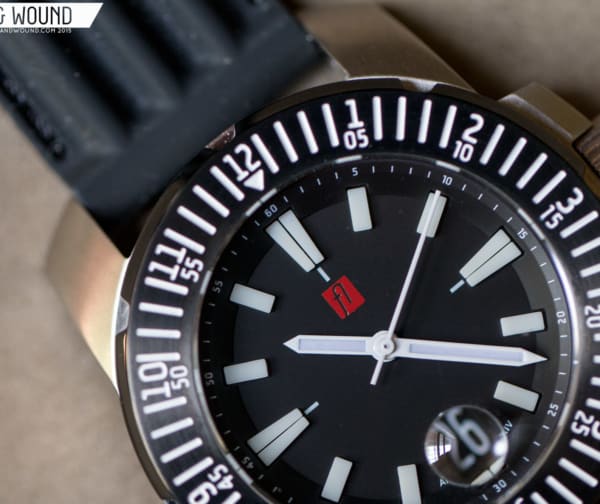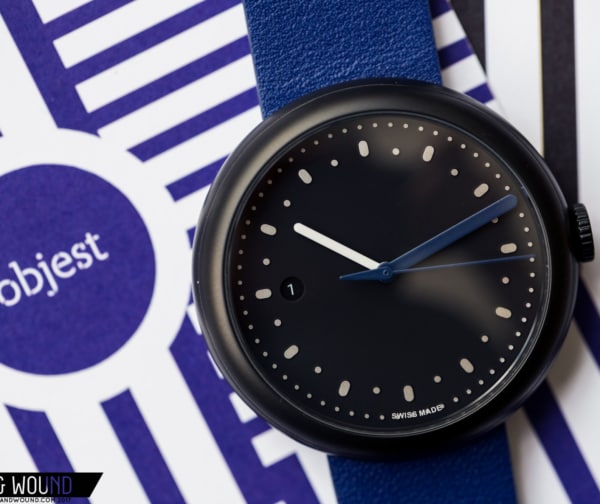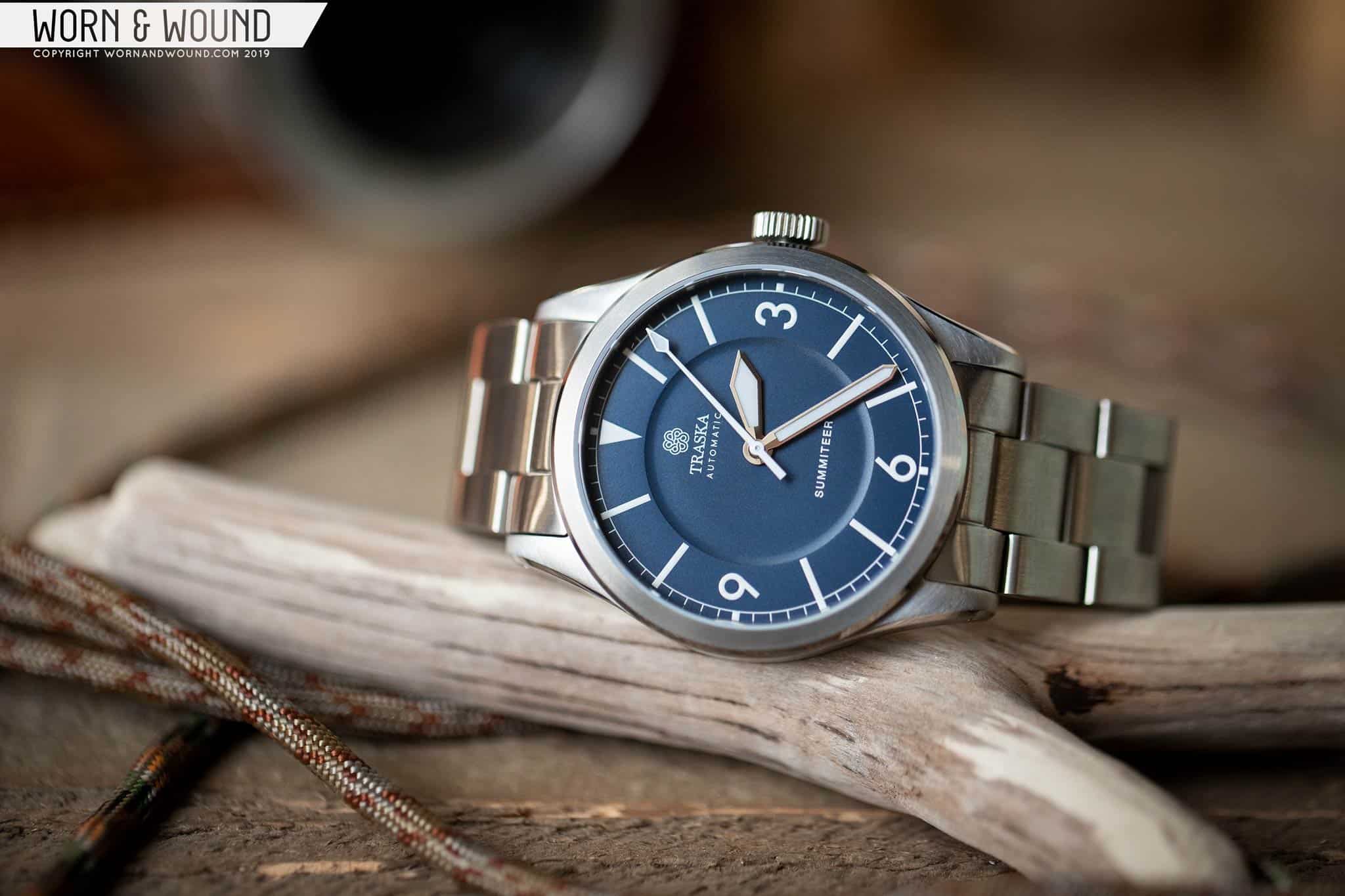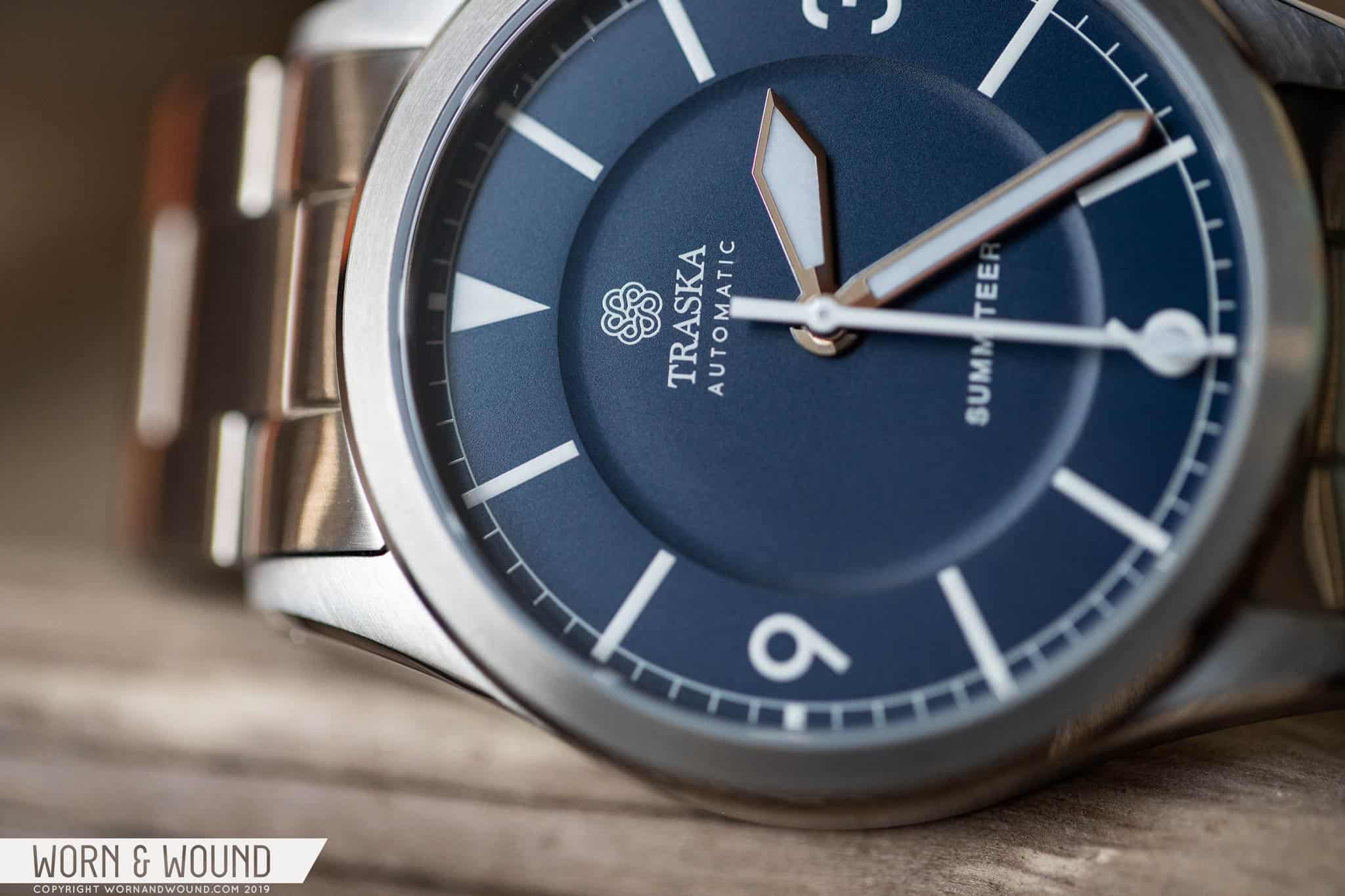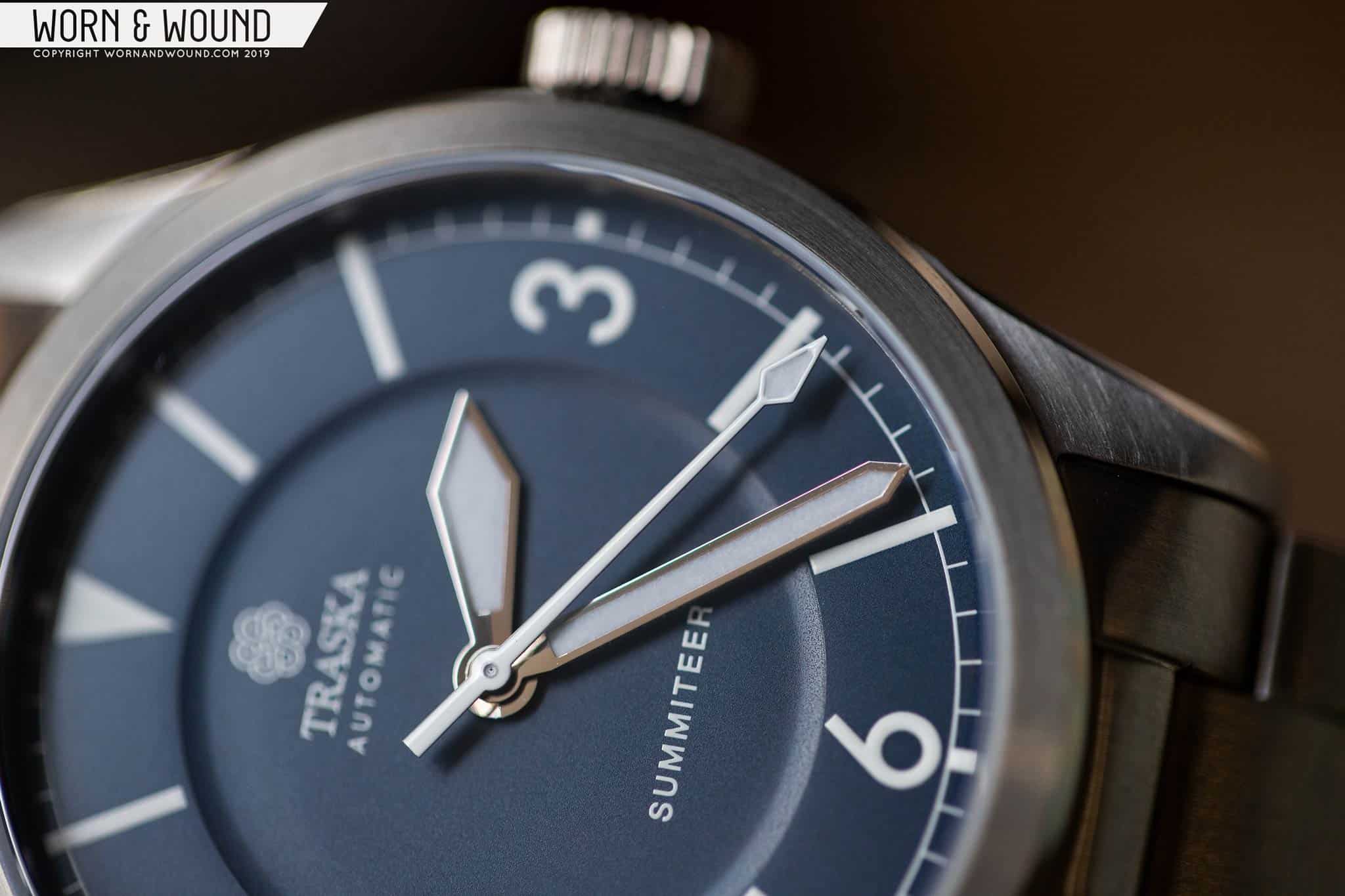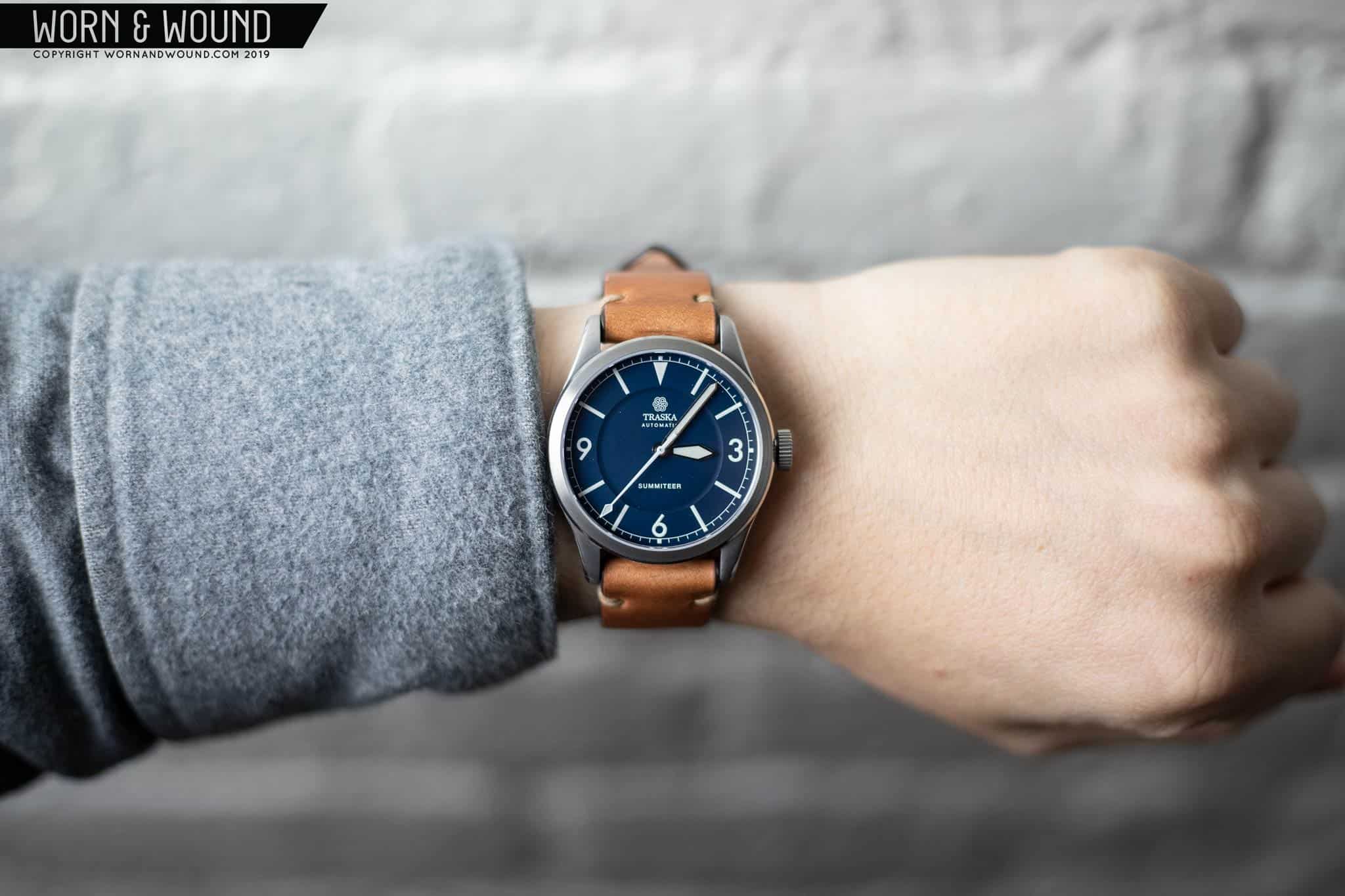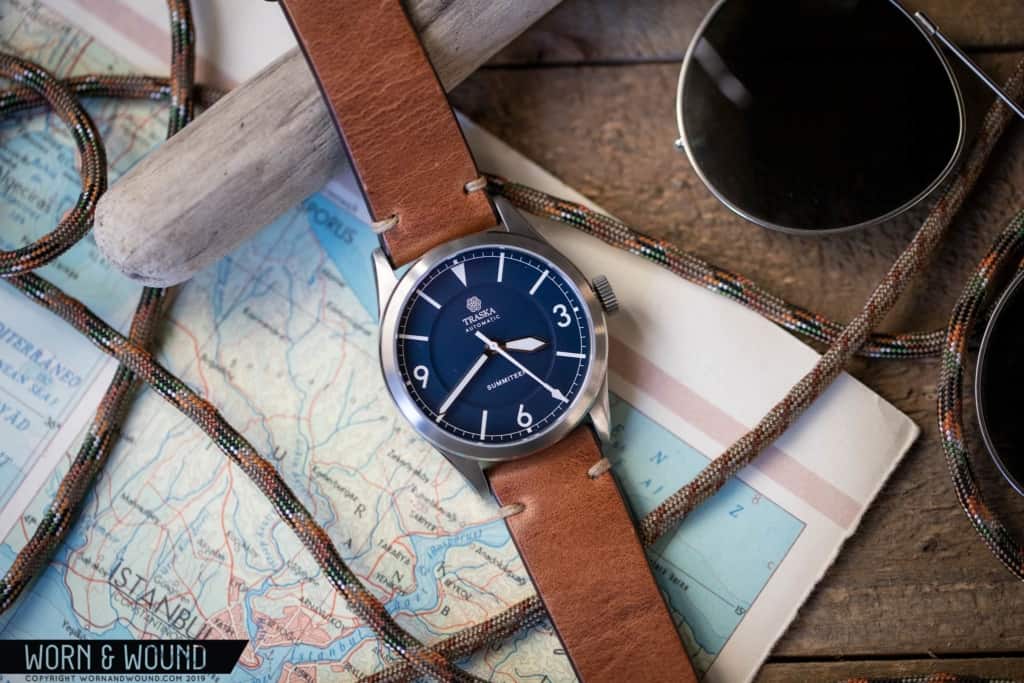Traska is part of a new wave of value-driven micro-brands. Alongside the likes of Lorier, Nodus, and Boldr, they are young, both in terms of company and owner age, on or ahead of the trends, social media savvy, and design-focused. Their first release, the Freediver, was very well received by enthusiasts. Though hardly a new concept, this vintage-inspired dive watch managed to have a unique look. It was balanced, restrained, and mature. Not what you always find on a freshman effort.
For their next line, Traska announced the Summiteer, an explorer-style watch with a keen graphic sensibility and a scratch-resistant case. In a smart move, they didn’t follow up a dive watch with another dive watch, rather going for a more general every day/sport/tool watch. This let them flex their creative muscles in a different way, while also saying a bit about the direction their brand will go. Once again, they managed to create a timepiece that has a maturity to it that I admire. It’s not an impulsive design, rather one that you can tell in the subtleties of the proportions, typography, and case detailing, took time and consideration.
Now, I’ll plainly admit that I find 1016 Explorers to be near perfection in all regards except pricing (sigh). The simplified index, mix of type and graphic elements, nimble size, ability to dress up or down – forget about it. So, when I see a watch that draws on that icon, without copying it, I tend to be interested. Needless to say, when I saw the Summiteer pop up in my IG feed, I was immediately excited. It had the right elements to trigger my 1016-response, yet enough of its own personality to be its own thing. And, perhaps more importantly, while speaking to a mid-century watch, feels and looks like a modern watch. No vintage pastiche here.









 Featured Videos
Featured Videos




